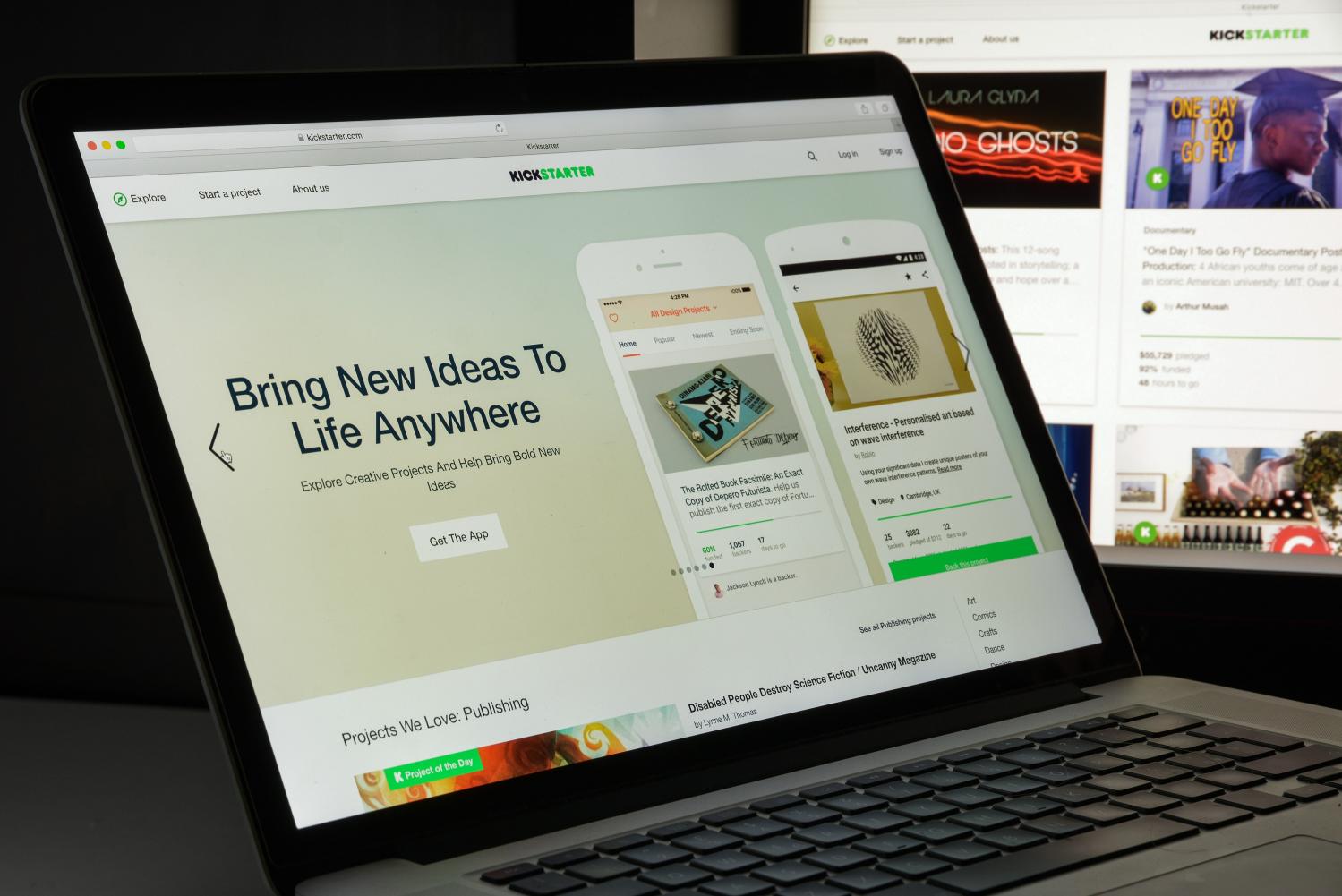Entrepreneurship—and the creative ingenuity often associated with it—is critical to regional economies. Yet, America’s startup rate has been in long-term decline, and pockets of business dynamism remain limited to a small group of geographic areas. Dynamic economies demonstrate the business “churn”—where firms are both being created and destroyed—necessary to yield creative destruction. Young firms are critical in this process, which is why in recent years economists have been closely watching trends related to new business starts, high-growth businesses, and venture capital investment.
This post adds an additional data source to the study of entrepreneurship: Kickstarter, one of the country’s largest crowdfunding platforms. Crowdfunding, according to University of Pennsylvania professor Ethan Mollick, is “a variety of different efforts by entrepreneurs—cultural, social, and for-profit—to fund their efforts by drawing on relatively small contributions from a relatively large number of individuals using the internet.”
In theory, anyone can launch a Kickstarter project and anyone can fund one. As a metric, therefore, Kickstarter projects may be less subject to the same biases associated with other entrepreneurship data such as venture capital investment, which may reflect the geographic and social networks of investors as much as it does the concentration of good businesses ideas.
In this way, Kickstarter data offers a useful supplement to existing metrics on an important issue. In a nationwide analysis of Kickstarter projects from 2010 to 2017, this analysis uncovers four core findings:
People use Kickstarter for both one-time activities and ongoing ventures
The Kickstarter platform has raised $3.9 billion in crowdfunding since its inception, helping launch thousands of companies. Creators receive the funds only when the project reaches its funding goal. Broadly defined, there are two types of Kickstarter projects. The first type seeks to initiate one-time activities, such as an art installation, a video production, or a comic book. A second project type strives to secure seed capital for ongoing ventures that produce innovative gadgets, indie games, and designer fashion.
Among all the projects on Kickstarter, more than two-thirds fall into the one-time activities category. These projects enjoy a higher rate of success compared to ongoing ventures. However, they account for a much smaller share of total funding pledged on the platform. On average, ongoing ventures raised $32,000 per project, nearly twice as much as one-time activities.

Kickstarter’s ongoing ventures, in particular, can support creative ideas and job creation
Studies show crowdfunding provides a viable path for commercializing innovation, in at least three ways. First, it provides capital access to directly support the development of the projects when alternative funding sources are constrained. Second, the creator-backer community formed by these platforms serves as a low-cost playground for creators to test and refine their ideas, especially in an emerging market where the knowledge is rapidly evolving, hard to acquire, and difficult to verify. Third, crowdfunding also helps to demonstrate market demand, which can eventually lead to traditional funding from professional investors.
Ongoing ventures, in particular, have high potential to grow into full-fledged companies that hire employees and generate revenues. A survey of 550 projects in three Kickstarter categories—technology, product design, and video games—found that over 90 percent of the successful projects remained ongoing ventures, on average adding 2.2 employees each. Since these are the projects most associated with job growth, we focus the remainder of our analysis on ongoing ventures.
Metro areas with a high density of successful Kickstarter projects also concentrate high-growth companies and venture capital investment
Figures 1 and 2 show the relationship between Kickstarter projects and venture capital investment and high-growth companies, respectively. Our analysis suggests that the local conditions that yield successful Kickstarter ventures also attract venture capital investment (as measured by National Venture Capital Association based on data from Thomson Reuters) and create high-growth companies (as defined by firms on the Inc. 5000 high-growth firm list). This does not mean that vigorous Kickstarter communities attract more venture capital and seed more high-growth companies. Rather, it indicates that the same conditions that yield creative activities on Kickstarter may also support those other outcomes.
The regions that received the highest per capita Kickstarter funding are San Jose, San Francisco, Provo (Utah), Salt Lake City (Utah) and Seattle, a combination of legacy and emerging entrepreneurship hubs. Notably, Syracuse (N.Y.), El Paso (Texas), and Youngstown (Ohio) are three metro areas that had much higher levels of Kickstarter funding than would be predicted by their amount of inward VC investment.


But Kickstarter extends to a more diverse set of people and places than venture capital investment
While closely tracking venture capital investment, Kickstarter funding has a more diverse distribution, both by gender and geography.
From a gender perspective, 35 percent of project leaders on Kickstarter are female, compared to 18 percent of VC-funded companies that have at least one female co-founder. Women also enjoy higher rates of success in funding their projects across all project categories except for games.
Geographically, half of U.S. venture capital investment concentrated in just two metro areas in 2017: San Francisco and New York. The five largest metro recipients of venture capital accounted for 81 percent of the nation’s investment. By comparison, the top five metropolitan areas captured 46 percent of successfully pledged funding on Kickstarter—still a relatively high share but much less concentrated than venture capital.

Importantly, the scale of venture capital investment ($75 billion in 2017) dwarfs successful Kickstarter funding ($1.5 billion between 2010 and 2017). In most major metropolitan areas, Kickstarter funding amounted to less than 1 percent of venture capital investment.
But for some communities, crowdfunding plays a more significant role. Nine of the nation’s 100 largest metropolitan areas, including Jackson (Miss.), Youngstown (Ohio), Syracuse (N.Y.) and El Paso (Texas), among others, have received more funding from Kickstarter than from VC investors. Las Vegas, New Orleans, and Buffalo (N.Y.) are also among the six other metro areas in which VC investment is less than 10 times the Kickstarter funding from 2010 to 2015.

This analysis is exploratory in nature, but it does raise one implication for local and regional leaders interested in spurring new business growth. Economic development officials often spend significant time and resources on “lead generation,” attempting to get companies to relocate to their jurisdiction. Kickstarter offers a lead generation source of a different sort. Homegrown companies that launched through Kickstarter campaigns may not yet need traditional economic development support, but could benefit from intermediaries that can connect them to business management services, mentorship by other entrepreneurs, or access to additional financing. In this way, crowdfunding platforms like Kickstarter could provide the opportunity for broader, more inclusive regional economic growth.








